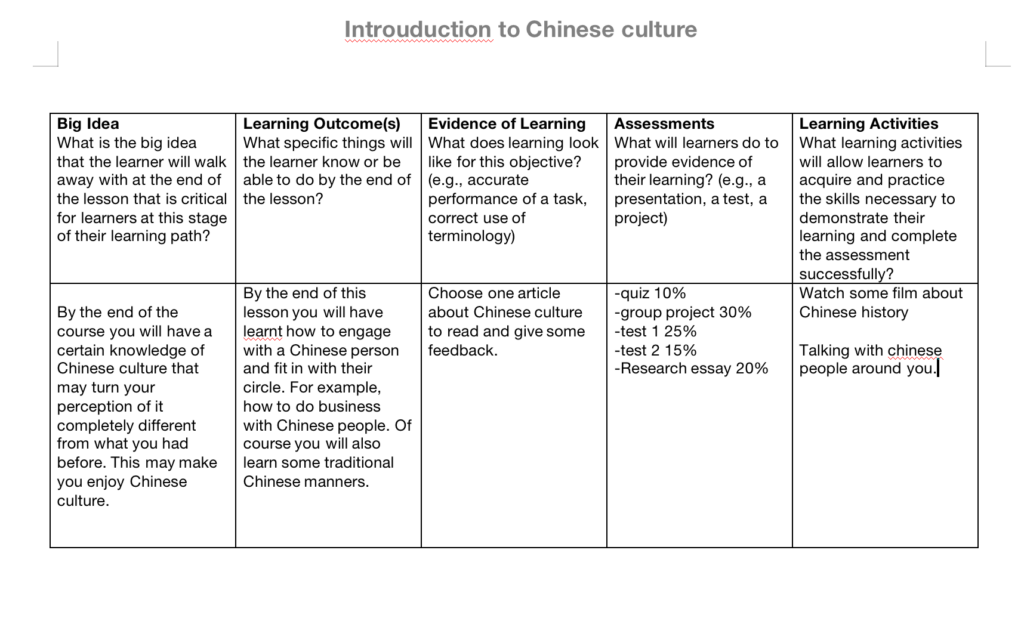This week, I learned that backward design is very important for Educators. Because they used to design learning experiences and instructional techniques to achieve specific learning objectives. The backward design begins with the goals of the course in terms of what students should learn and be able to do and then works ‘backward’ to create a course that achieves these desired goals. Taking into account the needs of their students, teachers can choose the most appropriate methods to help their classes achieve the learning outcomes.
That is my Chinese culture Course Plan Template:

In-game learning
I love the game-based learning experience. Although there are many benefits to using it in the classroom, I prefer it to more old-fashioned teaching methods for one simple reason: it’s more fun. In my high school, my English teacher always use Kahoot to help us learn English. That is very helpful for me to learn English. In my opinion, games with winners are perfect for use in the classroom. If teachers use competitive games in the classroom, students are likely to be more engaged and cooperative. Merrill concluded that motivation comes from learning, not the other way around. Students get motivated when their new knowledge is applied to real-world problems they haven’t encountered before.
Merrill’s First Principles in-game learning
-New knowledge is applied by the learner
-New knowledge is integrated into the learner’s world
-New knowledge is demonstrated to the learner
In my way, those three principles are often missed in my experience. Merrill’s teaching principles are a popular and successful model for instructional design because they can be universally applied to any online course, regardless of the subject matter. It helps course builders focus on teaching how to solve real-world problems, test existing knowledge, demonstrate potential solutions, check comprehension, and challenge students to solve tangible problems themselves.
Reference
Merrill, M. D. (2002). First Principles of Instruction. ETR&D, 50, 3. pp. 43-59.
Wiggins, G. and McTighe, J. Understanding by Design. 2nd ed. 2005. Web.
Merrill’s First Principle of Instruction – (20 min) – A synthesis of Merrill’s principles from an instructional design perspective
